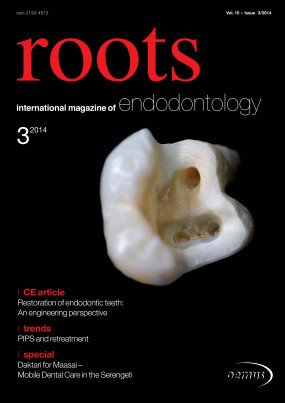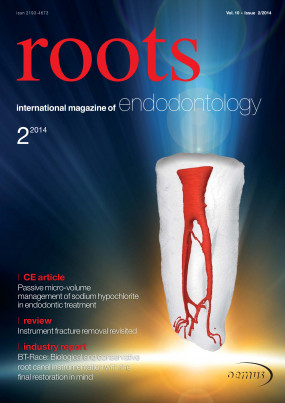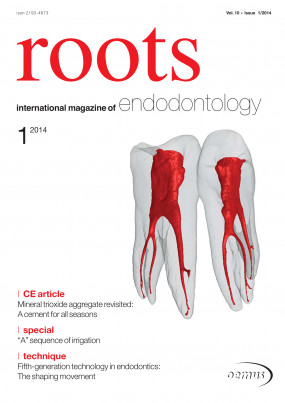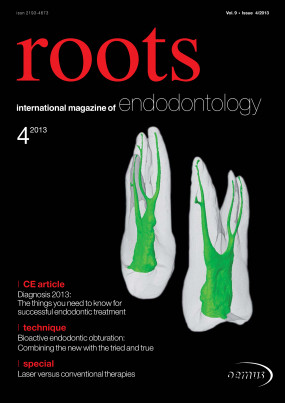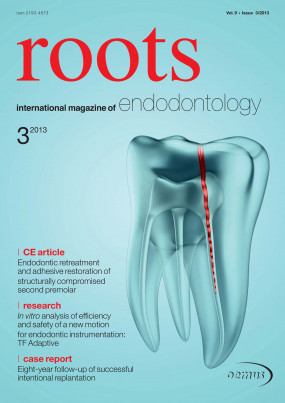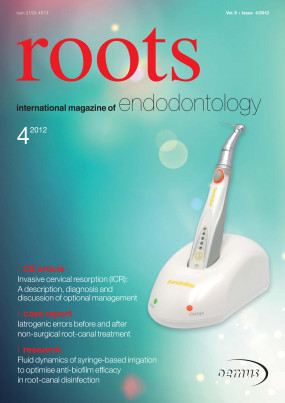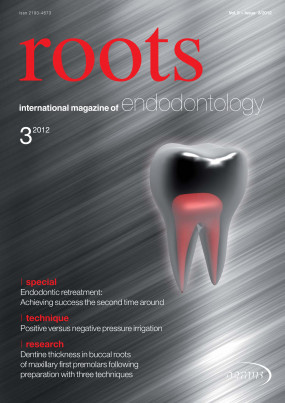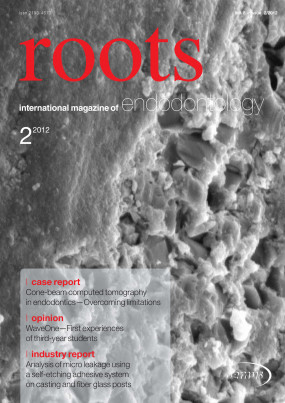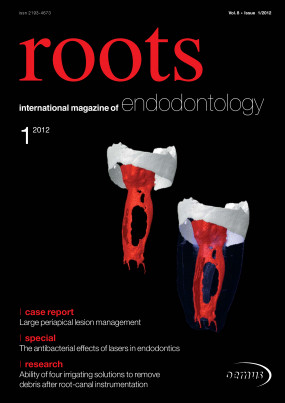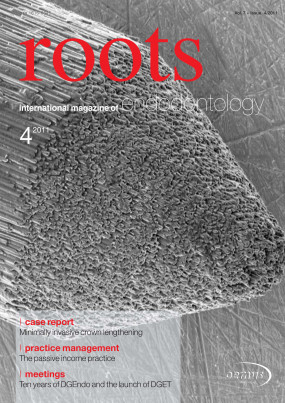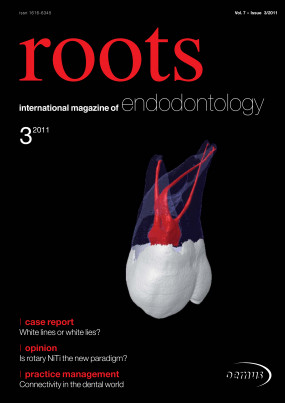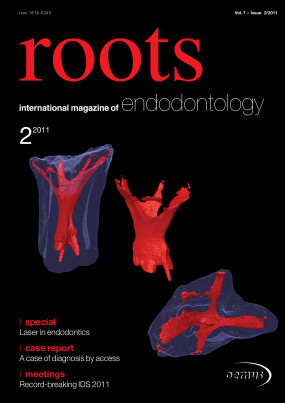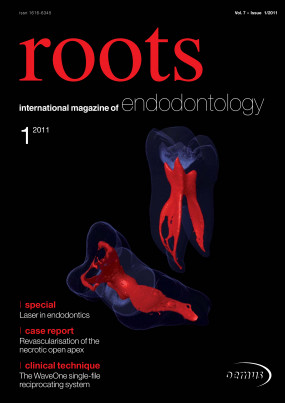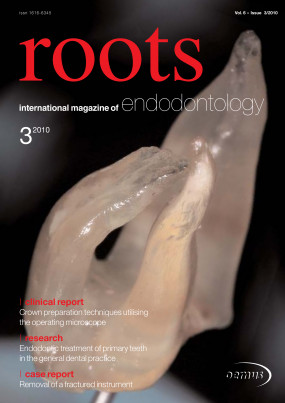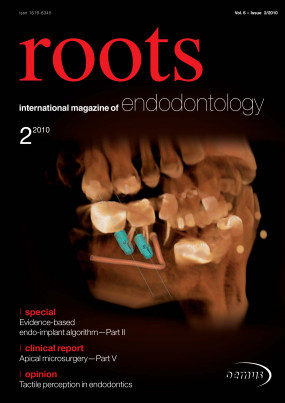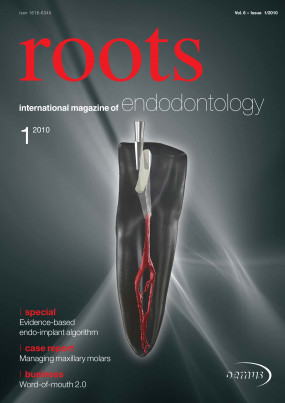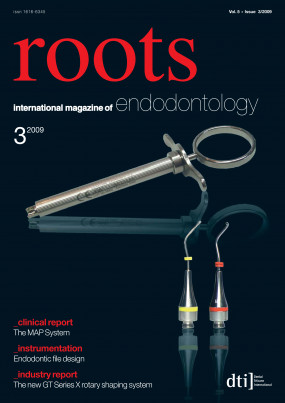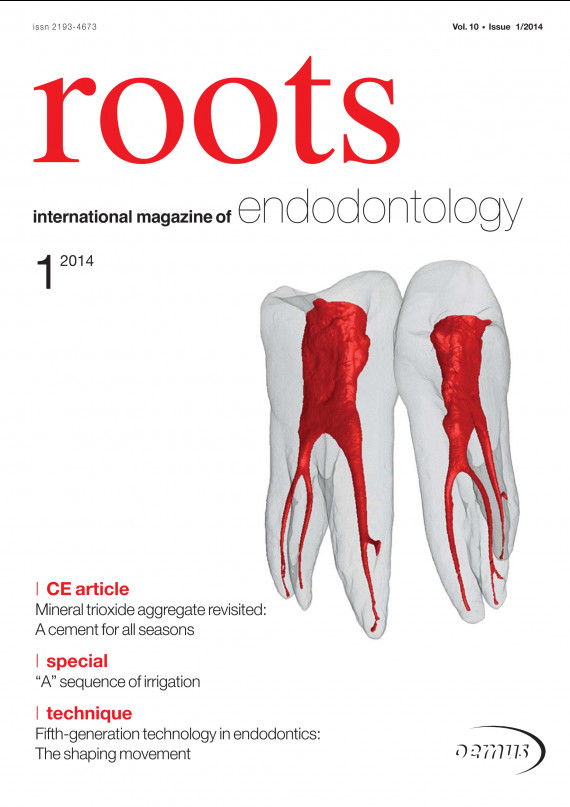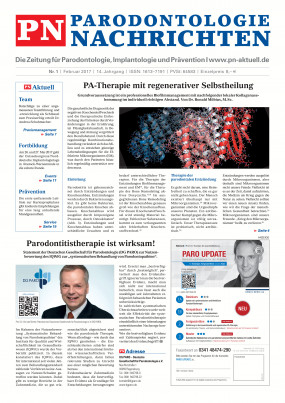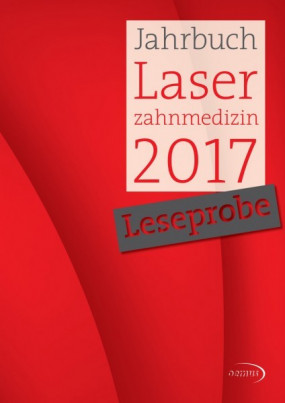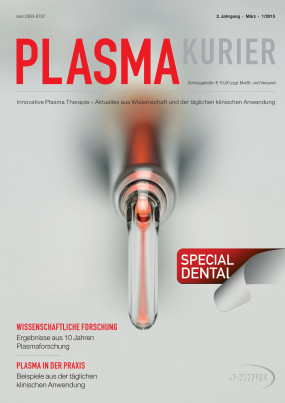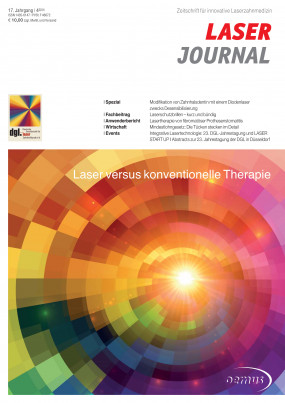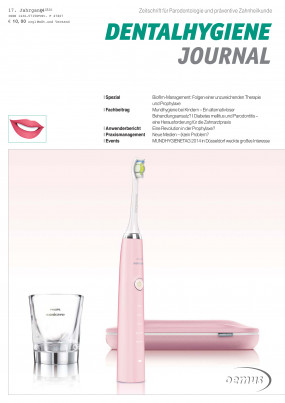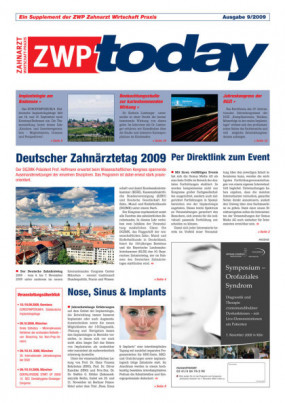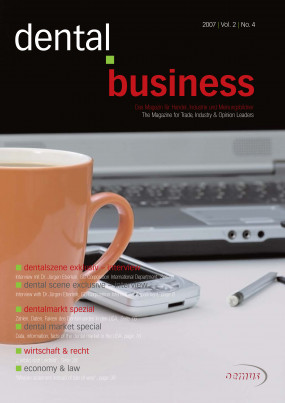Inhaltsverzeichnis
3
Editorial: Where we have been, where we are and where we are going? Is “Big Brother” watching us?
Dr Gary Glassman, Doctor of Dental Surgery, Fellow of Royal College of Dentists of Canada
The future of endodontics is bright and holds incredible promise as we continue to develop new techniques and technologies that will allow us to perform endodontic treatment painlessly and predictably. For the past 100 years the objective of dentistry has always been and always should be to maintain the natural dentition wherever possible. And the objective of endodontic treatment has never wavered since root canal treatment was first performed; that being to prevent or treat apical periodontitis such that there is complete healing and an absence of infection, while the overall long-term goal is the placement of a definitive, clinically successful restoration and preservation of the tooth. With the emergence of exciting technologies, clinical endodontics is seeing higher successes never seen before.
6
This article qualifies for CE credit. To take the CE quiz, log on to www.dtstudyclub.com. Click on ‘CE articles’ and search for this edition of the magazine. If you are not registered with the site, you will be asked to do so before taking the quiz. You may also access the quiz by using the QR code.
10
Apexification with mineral trioxide aggregate (MTA): A case report
Dr Abu-Hussein Muhamad, Greece; Drs Abdulghani Azzaldeen & Abu-Shilabayeh Hanali, Jerusalem
Mineral trioxide aggregate (MTA) was introduced as an alternative to traditional materials for the repair of root perforations and pulp capping and as a retrograde root filling owing to its superior biocompatibility and ability to seal the root canal system. Traditionally, calcium hydroxide (Ca(OH)2) has been the material of choice for the apexification of immature permanent teeth but MTA holds significant promise as an alternative to multiple treatments with Ca(OH)2. This paper discusses the use of Ca(OH)2 as a traditional apexification material and provides an overview of the composition, properties and applications of MTA with emphasis on its use in the apexification of immature permanent teeth. A case report is presented to demonstrate its use...
14
During the last several years, endodontics has progressed to the point where treatment has become less traumatic for the patient and less stressful for the dentist. While the use of nickel-titanium rotary instruments has allowed us to gain time during endo-dontic treatment, it can tempt us to neglect one of the main objectives of endodontics, that is the cleaning, or the chemical preparation, of the root canal system—we need to be clear on whether we are treating a canal or a root canal system. The main goal of root canal treatment is to completely eliminate the various components of the pulpal tissue, calcification and bacteria; to place a hermetic seal to prevent infection or reinfection; and to promote healing of the surrounding tissues, if needed...
18
Photon induced photoacoustic streaming (PIPS) is a low-energy (20mJ) technique based on very short Er:YAG laser-emitted photons introduced into an irrigation solution inside the access of the tooth. This process, which uses the Lightwalker (Lasers4Dentistry), introduces an aggressive and effective photoacoustic streaming or tidal wave of irrigation solution into canals, accessory anatomy and deep into the dentinal tubules of the root canal system. PHAST PIPS can be described as “irrigation on steroids”...
22
Fifth-generation technology in endodontics: The shaping movementSecond generationThird generationFourth generationFifth generation
Drs Clifford J. Ruddle, John D. West & Pierre Machtou, USA
Since the beginning of modern-day endodontics, there have been numerous concepts, strategies, and techniques for preparing canals. Over the decades, a staggering array of files have emerged for negotiating and shaping them. In spite of the design of the file, the number of instruments required and the surprising multitude of techniques advocated, endodontic treatment has typically been approached with optimism for probable success.
30
The rationale and use of electronic apex locatorsAccess cavityUse of lubricantFile sizeUse an EAL oftenLength determination radiographs
Dr L. Stephen Buchanan, USA
Electronic apex locators (EALs) are my best friend when performing a root canal. Of all the devices I use in practice, my RootZX-mini (Fig. 1) is the most indispensable. This is borne out by the fact that most endodontists use an EAL to determine length in every root canal they treat...
34
Electronic length determination has become the gold standard over the last few years. The Deut-sche Gesellschaft für Zahn-, Mund- und Kieferheil-kunde (German association for dental, oral and maxillofacial surgery) confirmed in a statement that this technique is superior to working length determination with a conventional radiograph. However, 3-D radiography (CBCT) provides an additional method for determining the endodontic working length...
36
New endodontic imaging mode from Planmeca yields detailed images without noise or artefacts
Redaktion
Planmeca has introduced a new imaging mode specially developed for use in endodontics and that is ideal for cases dealing with small anatomical details, such as imaging of the ear. The new imaging mode is available for all Planmeca -ProMax 3D family units and provides perfect visu-alisation of even the smallest anatomical details. The program produces extremely high-resolution images with a very small voxel size (only 75µm). -Owing to the intelligent Planmeca AINO noise -removal and Planmeca ARA artefact removal -algorithms, noise-free and crystal-clear images are produced...
38
American Association of Endodontists organised Root Canal Awareness Week for the seventh time
Redaktion
During its seventh annual Root Canal Awareness Week, which was held from 17 to 23 March, the American Association of Endodontists (AAE) aimed to dispel myths surrounding root canal treatment and encourage general dentists to involve endodontists in case assessment and treatment planning to save patients’ natural teeth.
